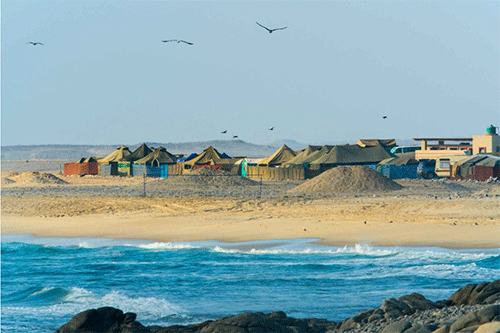In an effort to fulfil the President’s commitment towards greenhouse gas emissions reduction, the Kunene region needs funding from both local and foreign investors to promote green economy initiatives in local authorities and infiltrate the blue economy.
President Hage Geingob said Namibia is committed to reducing greenhouse gas emissions to protect and restore marine and coastal ecosystems to reduce ocean pollution, benefit more from marine resources and boost the economy.
In December 2020, he made the commitment during the launch of the transformation document on sustainable ocean economy by the president’s office, which highlights how Namibia can explore its natural resources in the ocean to help the economy recover and create employment for local people.
Geingob said, “Given her natural endowments, Namibia is uniquely positioned to leverage her oceanic assets to benefit her people and the globe at large”.
Namibia is determined to develop a green and blue economy that will ensure natural resources are at the centre stage of its drive to deliver economic prosperity.
Geingob said Namibia will be part of the first cohort of countries to develop Sustainable Ocean Plans by 2025.
Delivering the state of the region address (Sora), Kunene governor Marius Sheya last week said the region is in a unique position that accords its unique development advantages in both the blue and green economies.
Sheya argued that while the region is introducing projects like IREMA, NAMSIP and the Baynes Hydro-Power Plant to access green growth, they need funding from both local and foreign investors to promote green economy initiatives in local authorities and infiltrate the blue economy.
“We are adamant that our coastline and marine resources are of great economic value. The coastline encourages the establishment of a harbour while the tourism prospect of the coast cannot be argued away,” Sheya stated.
Namibia and Angola are anticipating the construction of the Baynes dam – and subsequently the hydroelectric power plant to take place after the end of 2022.
The two neighbouring countries discussed the project in 2007 and agreed to carry out detailed feasibility studies for the possible development of the Baynes Hydro Power Project.
The plant is estimated to cost US$1.2 billion (over N$22.5 billion), based on the techno-economic study conducted in 2014.
In terms of tourism, the governor noted Covid-19 has stripped them from capitalising on economic benefits – as the sector, which sustains many livelihoods in the region, is one of the hardest hit by the pandemic.
“This has worsened unemployment, poverty and their effects. An important pathway for development and tourism can and will still play a crucial role in the post-Covid-19 in our economy; thus, it is important that we already start putting the needed facilities, infrastructure and services in place,” he recommended.
Moreover, he pledged, Kunene will remain committed to resource mobilisation – both locally and internationally, to transform the livelihood of the society, increase resilience and for the sustainable management of natural resources.
- anakale@nepc.com.na


